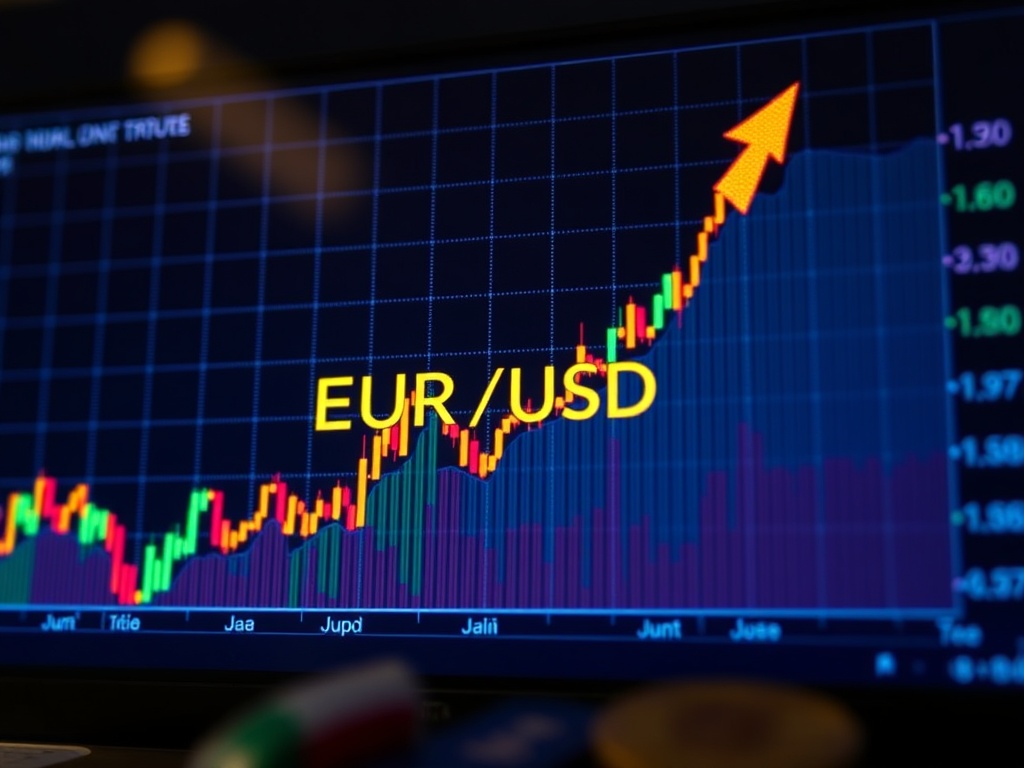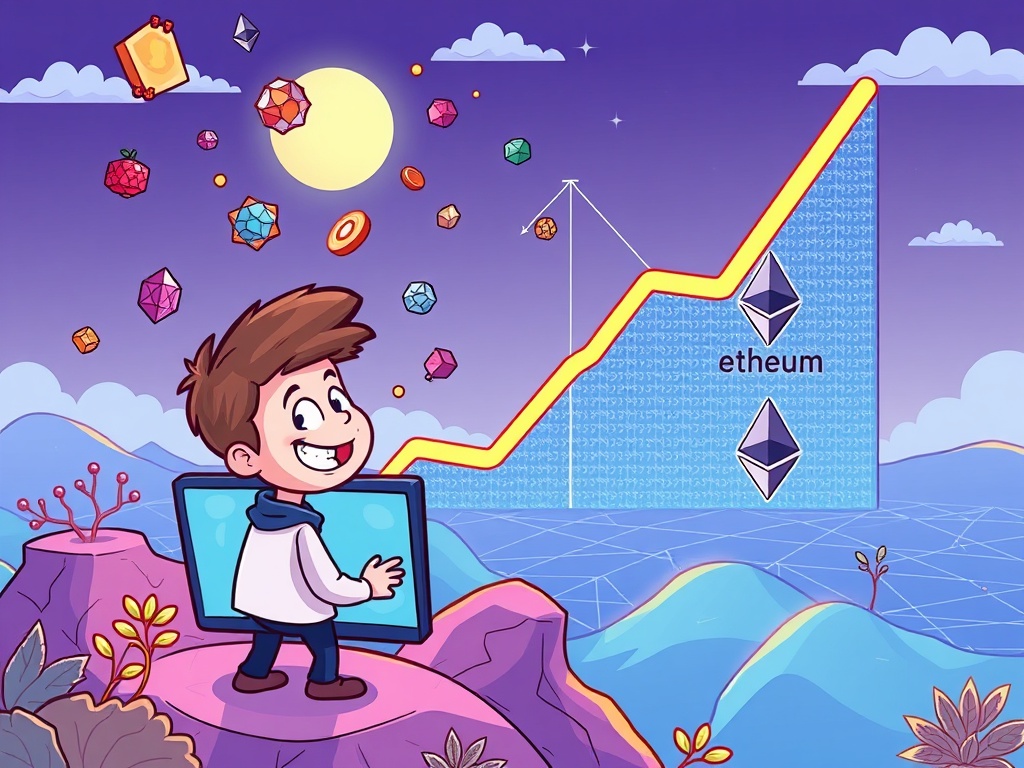BitcoinWorld

EUR/USD Resilient: Crucial Friday Rally Offers Relief to Currency Traders
In the dynamic world of cryptocurrency and traditional finance, understanding macro trends is paramount. Recent movements in the foreign exchange market, particularly concerning the EUR/USD pair, offer valuable insights into global economic shifts and investor psychology. After weeks of relentless pressure, a crucial Friday rally provided a significant sigh of relief for those holding long positions in the euro against the US dollar. This unexpected rebound helped many currency traders avoid what could have been a major capitulation event, demonstrating the unpredictable nature and swift reversals possible within the Forex market.
The Crucial Friday Rally: Averted Capitulation for EUR/USD Longs
The term ‘capitulation’ in financial markets describes a point where investors, exhausted by losses, give up and sell off their positions en masse, often at the market bottom. For EUR/USD longs, the recent downward trend had pushed many to the brink. Persistent dollar strength, fueled by hawkish Federal Reserve expectations and safe-haven demand, had weighed heavily on the pair. The euro, grappling with energy crises, inflation, and geopolitical tensions, found little fundamental support.
However, Friday’s trading session saw a remarkable reversal. What triggered this shift? Several factors likely converged:
- Technical Rebound: The pair had reached deeply oversold levels, making it ripe for a technical correction as short positions became stretched.
- Profit-Taking: Traders who had profited handsomely from the euro’s decline began to take profits, buying back euros and pushing the price higher.
- Minor Data Shifts: While no single piece of economic data was a game-changer, a slight softening in some US indicators or a marginally more optimistic tone from European officials could have provided the impetus for a short squeeze.
- Reduced Liquidity: As the trading week drew to a close, thinner liquidity can often exaggerate price movements, amplifying the impact of buying interest.
This rally was not merely a blip; it was a testament to the market’s capacity for sudden recalibration. It allowed many currency traders who had maintained their long positions through challenging times to breathe easier, preventing forced liquidations and potential margin calls that characterize true capitulation.
Navigating the Volatile Forex Market Landscape
The Forex market, the largest financial market globally, is a complex ecosystem influenced by a myriad of factors, including interest rate differentials, economic growth prospects, geopolitical stability, and central bank policies. Recent months have seen unprecedented volatility, driven by:
- Inflationary Pressures: Global inflation has forced central banks into aggressive tightening cycles, leading to significant shifts in monetary policy expectations.
- Energy Crisis: Europe’s reliance on energy imports, particularly natural gas, has left the euro vulnerable to price spikes and supply disruptions.
- Geopolitical Tensions: Ongoing conflicts and international relations continue to inject uncertainty, driving flows into perceived safe-haven assets like the US dollar.
Within this environment, the EUR/USD pair acts as a crucial barometer of global economic health and investor confidence. Its movements reflect the relative strength of the Eurozone and US economies. The Friday rally, while a relief, should be viewed within this broader context of sustained volatility. It highlights that even in a strong trend, the Forex market can deliver sharp counter-trend moves, necessitating robust risk management strategies for all participants, including seasoned currency traders.
Understanding Currency Traders‘ Resilience and Risk
The life of a currency trader is one of constant analysis, quick decision-making, and often, emotional resilience. Avoiding major capitulation is not just about a single trade; it’s about the cumulative effect of managing risk, adhering to a trading plan, and understanding the psychological pressures of the market. When a currency pair like EUR/USD experiences a prolonged decline, traders holding long positions face immense pressure:
- Emotional Strain: Watching profits erode or losses mount can lead to panic selling or irrational decisions.
- Margin Calls: Brokers may demand additional funds to cover potential losses if positions move too far against the trader.
- Opportunity Cost: Capital tied up in losing positions cannot be deployed elsewhere.
The Friday rally offered a reprieve, allowing some to close positions at better levels, others to reduce their exposure, and still others to hold on, hoping for a more sustained reversal. This resilience is built on:
- Effective Risk Management: Setting stop-loss orders, position sizing, and diversifying portfolios.
- Patience and Discipline: Not chasing every move, waiting for confirmations, and sticking to pre-defined strategies.
- Continuous Learning: Adapting to new market information and refining trading approaches.
For many currency traders, this event underscored the importance of not being overly leveraged and having sufficient capital to withstand significant drawdowns. It was a harsh lesson for some, and a vindication for others who had maintained conviction.
Shifting Market Sentiment: What Drove the Relief?
Market sentiment refers to the overall attitude of investors toward a particular security or financial market. It’s a powerful, often self-fulfilling, force that can drive prices beyond what fundamentals alone might suggest. For the EUR/USD rally, a shift in market sentiment was pivotal. While the underlying economic narrative for the Eurozone remains challenging, the sheer negativity surrounding the euro had likely reached an extreme.
What causes such shifts? Often, it’s a combination of:
- Extreme Positioning: When too many traders are on one side of the market (e.g., heavily short the euro), any small positive news or technical bounce can trigger a rapid unwinding of those positions, leading to a ‘short squeeze.’
- Minor Fundamental Tweaks: Even if the overall economic picture hasn’t dramatically improved, a slightly less pessimistic outlook from a central bank official, or a minor positive surprise in an economic report, can be enough to spark a change in perception.
- Technical Reversals: Key support levels holding, or specific candlestick patterns forming, can signal to technical traders that a reversal might be imminent, encouraging new buying.
- Risk-On/Risk-Off Flows: Broader global risk appetite can impact currency pairs. A temporary return to ‘risk-on’ sentiment in equity markets, for instance, might reduce demand for safe-haven currencies like the dollar, benefiting the euro.
The Friday rally indicated that while the bearish arguments for EUR/USD remain strong, the market sentiment had become so overwhelmingly negative that it was vulnerable to a correction. This doesn’t necessarily mean a long-term trend reversal, but it does suggest that the path of least resistance for the euro might not be straight down anymore, at least for the short term.
The Persistent Shadow of USD Strength: A Broader View
Despite the euro’s recent rally, the overarching narrative in the global currency markets remains one of pronounced USD strength. The US dollar index (DXY), which measures the dollar against a basket of major currencies, has been trading at multi-decade highs. This robust performance is primarily attributable to several key factors:
- Aggressive Federal Reserve Tightening: The Fed has been more hawkish than most other major central banks, raising interest rates rapidly to combat inflation. Higher interest rates make dollar-denominated assets more attractive, drawing capital inflows.
- Safe-Haven Demand: In times of global economic uncertainty, geopolitical instability, or market volatility, the US dollar traditionally acts as a safe haven. Investors flock to US treasuries and dollar assets, perceiving them as secure during turbulent periods.
- Relative Economic Resilience: While the US economy faces its own challenges, it has generally shown more resilience compared to the Eurozone, which is grappling with an energy crisis and the direct impact of the conflict in Ukraine.
The EUR/USD rally, while significant for those holding long positions, must be seen in the context of this powerful underlying trend of USD strength. It could be interpreted as a temporary correction within a larger dollar bull market, rather than a definitive reversal. For a sustained euro recovery, there would likely need to be a fundamental shift in the economic outlook for the Eurozone relative to the US, or a significant pivot in Federal Reserve policy.
Technical and Fundamental Factors at Play
The Friday rally was a confluence of both technical and fundamental drivers. From a technical perspective, the EUR/USD pair had reached critical support levels on longer-term charts, suggesting that a bounce was overdue. Indicators like the Relative Strength Index (RSI) were flashing oversold signals, indicating that the selling pressure might have been exhausted temporarily. Additionally, the formation of specific bullish candlestick patterns on daily charts often encourages short-term buying.
Fundamentally, while the overall picture for the Eurozone remains challenging, there might have been a subtle recalibration of expectations. For instance, some analysts might have begun to price in the possibility of the European Central Bank (ECB) adopting a more aggressive stance on interest rates, or perhaps the market had over-discounted the negative impacts of the energy crisis. Conversely, any slight disappointment in US economic data, even if not catastrophic, could have reduced the immediate impetus for further USD strength, allowing the euro some breathing room.
Challenges and Lingering Uncertainties for EUR/USD
Despite the relief rally, significant challenges and uncertainties persist for the EUR/USD pair. The fundamental divergences between the Eurozone and the US economies remain stark. Europe continues to face:
- Energy Dependency: The ongoing energy crisis and high gas prices pose a substantial threat to industrial output and household incomes.
- Inflationary Pressures: While the ECB is tightening, it’s perceived as lagging behind the Fed, maintaining a yield differential that favors the dollar.
- Geopolitical Risks: The proximity and direct impact of geopolitical conflicts continue to weigh on investor confidence in the Eurozone.
- Economic Slowdown: The risk of a recession in the Eurozone appears higher than in the US, which could further dampen the euro’s appeal.
For the rally to translate into a more sustained recovery, these structural issues would need to show signs of improvement. Without such shifts, the euro could easily succumb to renewed selling pressure, especially if the narrative of USD strength reasserts itself with conviction.
Actionable Insights for Navigating Future EUR/USD Moves
For currency traders looking to navigate the complex movements of EUR/USD, the recent rally offers several key takeaways and actionable insights:
- Do Not Chase the Rally Blindly: While the relief was palpable, it’s crucial to assess if this is a genuine reversal or merely a technical bounce within a broader downtrend. Look for confirmations.
- Monitor Key Economic Data: Keep a close eye on inflation figures, GDP growth, and employment reports from both the Eurozone and the US. These will heavily influence central bank decisions.
- Follow Central Bank Commentary: Statements from the ECB and Federal Reserve officials regarding interest rate policy and economic outlook are paramount. Diverging policies will continue to drive the pair.
- Watch Energy Prices: For the euro, energy prices, particularly natural gas, remain a critical vulnerability. Any significant spikes could reignite bearish sentiment.
- Implement Robust Risk Management: Given the high volatility, strict stop-loss orders, appropriate position sizing, and avoiding excessive leverage are more important than ever.
- Observe Technical Levels: Identify key support and resistance levels. A break above significant resistance could signal a more sustained recovery, while a failure to hold support could indicate a resumption of the downtrend.
The ability to adapt quickly to changing market conditions and maintain discipline will be critical for those trading the EUR/USD pair in the coming weeks and months. The Forex market rewards patience and strategic thinking.
Conclusion: A Glimmer of Hope in a Complex Market
The Friday rally in EUR/USD provided a much-needed respite for beleaguered longs, allowing currency traders to avoid major capitulation and offering a glimmer of hope in an otherwise challenging environment. This crucial rebound underscored the market’s capacity for sharp, counter-trend movements, even amidst a dominant trend of USD strength. While market sentiment has shifted slightly, the underlying fundamental headwinds facing the Eurozone remain significant. The road ahead for EUR/USD will likely be marked by continued volatility, driven by evolving central bank policies, inflation dynamics, and geopolitical developments. For traders, the emphasis remains on vigilance, disciplined risk management, and a nuanced understanding of both technical and fundamental factors shaping the Forex market. This event serves as a powerful reminder that even in the face of strong trends, the market always offers opportunities for those who are prepared and patient.
To learn more about the latest Forex market trends, explore our article on key developments shaping the EUR/USD pair’s liquidity and institutional adoption.
This post EUR/USD Resilient: Crucial Friday Rally Offers Relief to Currency Traders first appeared on BitcoinWorld and is written by Editorial Team





